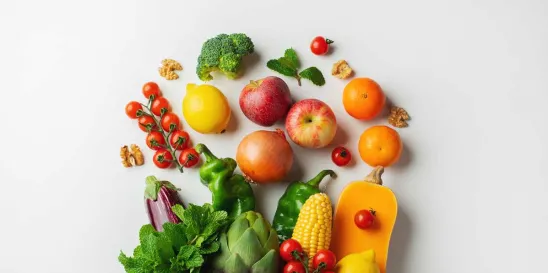What do avocados, bananas and citrus fruit all have in common in Texas? A large percentage reach our shores by ship. But you know how bananas and avocados ripen on the kitchen counter. How are they kept fresh from grove to store, and whose responsibility is it when the produce arrives in damaged condition, or the buyer fails to pay for these commodities?
Container ships with dedicated refrigerated containers (reefer ships) regularly transport perishable fruit from Central and South America to U.S. ports on the Gulf, East and West Coasts. The U.S. Carriage of Goods by Sea Act (“COGSA”) governs the transportation of cargo by ocean common carriage between the United States and foreign ports. Common carriage means that the ocean carrier makes its cargo space available to the public, as opposed to private carriage, which dedicates its cargo space to one or a select few shippers.
COGSA creates a burden-shifting scheme to assess liability when cargo arrives in damaged condition. The shipper (that is, the party whose cargo is transported) can present a prima facie case of liability by proving that it delivered the cargo in sound condition at the load port, the cargo arrived in damaged condition at the discharge port and the shipper suffered monetary damage as a result. The burden then shifts to the carrier to prove that it exercised due diligence and one of COGSA’s 17 exceptions to liability apply, for example: perils, dangers and accidents of the sea; inherent vice of the cargo; latent defects of the cargo not discoverable by due diligence; or an act, neglect of the master, mariner or servants of the carrier in the navigation or management of the vessel. If the carrier satisfies that hurdle, the shipper must then prove that the carrier’s negligence caused the damage. Note that carriers generally disclaim any liability for damage to cargo carried above deck (because of exposure to the elements) and so shippers should be aware as to whether the bill of lading includes any such disclaimer and where their cargoes will be stowed aboard the vessel.
COGSA also allows an ocean carrier to limit its liability to $500 per package or customary freight unit if the bill of lading permits the shipper to declare a higher value on the face of the bill. If the shipper inserts a higher value for its cargo, the carrier may charge a higher freight rate but assumes liability for the full value of the cargo. The number of packages is usually included on the face of the bill of lading. Because of this right to limit liability, shippers should always consider obtaining cargo insurance for cargoes carried aboard ship, though such policies also include various exceptions to liability.
Carrying perishable fruit requires special precautions by both shippers and carriers, especially given the seasonal nature of crop harvests. The goods must be shipped close in time to harvesting to minimize spoilage, which may be difficult if multiple growers are involved who harvest at different times. The shipper should consider including sensors within various fruit boxes within the container to measure temperature and humidity conditions and supplying container loading instructions addressing inappropriate cargo mixes to avoid cross-contamination and premature ripening. Before loading the reefer containers aboard ship, the shipper should provide the ocean carrier with the set-point temperature (specifying whether in Celsius or Fahrenheit to avoid confusion), humidity conditions, and air flow/vent settings that apply to each container and type of fruit carried. Transport standards are included in the Code of Practice for Packing of Cargo Transport Units (CTU Code). Each refrigerated container should undergo an inspection to assess its operating condition (including vent settings, air flow, door gaskets and no odors) and cooled to the set-point temperature before loading the fruit boxes. The carrier should inspect each electrical plug connection and properly connect and seal it for sea exposure. If feasible, depending upon how high containers are stacked, the carrier should make regular rounds of the reefer containers to check each remains at the correct temperature. The carrier should also keep an adequate supply of refrigerant aboard in case of cooling failures. This helpful article addresses the foregoing precautions in greater detail.
In case of cargo damage, gathering all available data and records about how the reefer boxes performed will be essential to assessing the cause of such damage, including whether the vessel’s crew carried out adequate inspections during the voyage, whether any breakdowns or electrical-power outages occurred that required mechanical/electrical repairs, and whether any delays degraded the fruit or reduced its useful life prior to delivery.
Perishable fruit sellers face a conundrum when confronted with transit delays where the cargo has not suffered physical damage, but its value deteriorates with the passage of time. To present a prima facie case, COGSA ordinarily requires proof of physical damage. Yet, in the context of a salvage sale of clementines, one court held that to state a prima facie case based on delay, a plaintiff may show it suffered loss by the price differential between the expected sale price on the original delivery date and the mitigation resale price. To recover for such delay damages, perishable fruit carriage of goods contracts must include a “time-is-of-the-essence” clause.
Keep in mind that if the bill of lading is a through bill of lading, that is, covers the transportation of the cargo all the way to destination, U.S. general maritime law permits the inland carriers to limit their liability under COGSA as described above. As well, many bills of lading incorporate the governing charterparty’s terms and conditions, in which event shippers should obtain and review same to assess provisions relevant to the carriage of perishable commodities.
Another area of risk that perishable fruit shippers face is receiver insolvency. Under the Perishable Agricultural Commodities Act (“PACA”), agricultural-product shippers can help guard against this risk. Under PACA, buyers must keep funds in a statutory trust on fruits and vegetables that they have received but not yet paid for. Shippers can make a claim against trust fund assets, which claims take priority over any other creditors’ claims. PACA licensees can preserve their trust rights by including a statement on the face of their invoices noting that the goods are sold subject to PACA’s statutory trust, and the seller retains a trust claim over such goods, along with other boilerplate language. Sellers who are not PACA licensees must include more elaborate language on the invoice supplying notice of intent to preserve trust benefits, among other information.
When we walk into a grocery store, we take for granted that fresh fruit of our choice is readily available every day. Yet, the synchronized efforts of growers, shippers, ocean carriers, receivers and retailers are necessary to keep an unimpeded flow, and the legal structure in the United States underpinning that flow provides predictability and mechanisms to remedy those relatively few cases where the goods are damaged in transit or otherwise remain unpaid.



 />i
/>i

